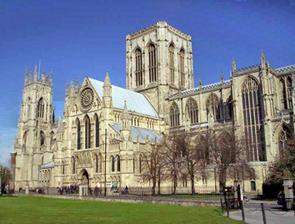So good they named it four
times

York is old. I don’t mean
old like Williamsburg, Virginia is old. Or even in the way Oxford University
is old. No, I mean old. Seriously old.
The Brigantes had a settlement here before the Roman Conquest. In the second
century Ptolemy referred to it as Eborakon, meaning a ‘place of yew trees’
or the ‘estate of a man called Eburos’, an early British personal name
meaning yew tree. In Celtic religious practice and legend yew trees were
special and significant. Indeed, later they became an enduring feature of
Christian churchyards.
The Romans latinised the name as Eboracum and it was their northern capital.
The Archbishop of York still signs himself Ebor. The Anglo-Saxons destroyed
much of Roman Eboracum; what remained was anglicised as Eoforwic, itself
meaning ‘town of wild boars’ in their language. Doubtless there were plenty
wandering through the city by the time the Angles had devastated it.
Following the Viking invasions York fell to the Danes in 867. They called it
Jorvik. The Danish kingdom of Jorvik lasted until Eric Bloodaxe, the last
Danish king of York, was defeated by the English in 954.
At the time of the Conquest there are thought to have been about 8,000
people living in York. Few would remain after the ordeal of William the
Bastard’s scorched earth policy in the winter of 1069-70, intended to teach
the English never to rebel against the Normans again.
To the Normans it became Yerk or Yarke. By the thirteenth century the name
York had been established.
Many places in the Anglo-Saxon world are named after it. There is a York in
Western Australia and Cape York is Australia’s north-easternmost point.
There are Yorks in Canada. And every Briton and American should be aware of
what happened at Yorktown. But I have always found it somehow appropriate
that the greatest city in America, the symbol of the Free World, should have
been named after one of the finest cities in Christendom. New York, in the
United States of America.
(Much of this was sourced from Brewer’s Britain and
Ireland by John Ayto and Ian Crofton, Weidenfeld & Nicholson, 2005).